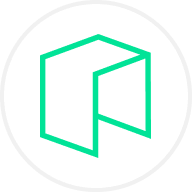
CVX
Cena Convex Finance
$2,7050
-$0,14000
(-4,93%)
Zmiana ceny w ciągu ostatnich 24 godzin

Jak się dzisiaj czujesz w związku z CVX?
Podziel się swoimi odczuciami tutaj, dając kciuk w górę, jeśli czujesz wzrost w związku z monetą, lub kciuk w dół, jeśli czujesz spadek.
Głosuj, aby wyświetlić wyniki
Zastrzeżenie
Treści społecznościowe na tej stronie („Treści”), w tym między innymi tweety i statystyki dostarczane przez LunarCrush, pochodzą od stron trzecich i są dostarczane „tak jak są” wyłącznie w celach informacyjnych. OKX nie gwarantuje jakości ani dokładności Treści, a Treści nie reprezentują poglądów OKX. Nie mają one na celu (i) doradztwa inwestycyjnego lub rekomendacji; (ii) oferty lub zachęty do kupna, sprzedaży lub posiadania aktywów cyfrowych; lub (iii) doradztwa finansowego, księgowego, prawnego lub podatkowego. Aktywa cyfrowe, w tym stablecoiny i NFT, wiążą się z wysokim stopniem ryzyka i mogą podlegać znacznym wahaniom. Cena i wyniki aktywów cyfrowych nie są gwarantowane i mogą ulec zmianie bez powiadomienia.
OKX nie udziela rekomendacji dotyczących inwestycji ani aktywów. Musisz dokładnie rozważyć, czy handel lub posiadanie aktywów cyfrowych jest dla Ciebie odpowiednie w świetle Twojej sytuacji finansowej. W przypadku pytań dotyczących konkretnej sytuacji skonsultuj się ze swoim doradcą prawnym, podatkowym lub specjalistą ds. inwestycji. Aby uzyskać więcej informacji, zapoznaj się z warunkami użytkowania i ostrzeżeniem o ryzyku. Korzystając z witryny internetowej strony trzeciej („TWP”), akceptujesz, że wszelkie korzystanie z TPW będzie podlegać warunkom TPW i będzie regulowane przez te warunki. O ile nie zostało to wyraźnie określone na piśmie, OKX i jego podmioty stowarzyszone („OKX”) nie są w żaden sposób powiązane z właścicielem lub operatorem TPW. Zgadzasz się, że OKX nie ponosi odpowiedzialności za jakiekolwiek straty, szkody i inne konsekwencje wynikające z korzystania z TPW. Pamiętaj, że korzystanie z TPW może spowodować utratę lub zmniejszenie Twoich aktywów. Produkt może nie być dostępny we wszystkich jurysdykcjach.
OKX nie udziela rekomendacji dotyczących inwestycji ani aktywów. Musisz dokładnie rozważyć, czy handel lub posiadanie aktywów cyfrowych jest dla Ciebie odpowiednie w świetle Twojej sytuacji finansowej. W przypadku pytań dotyczących konkretnej sytuacji skonsultuj się ze swoim doradcą prawnym, podatkowym lub specjalistą ds. inwestycji. Aby uzyskać więcej informacji, zapoznaj się z warunkami użytkowania i ostrzeżeniem o ryzyku. Korzystając z witryny internetowej strony trzeciej („TWP”), akceptujesz, że wszelkie korzystanie z TPW będzie podlegać warunkom TPW i będzie regulowane przez te warunki. O ile nie zostało to wyraźnie określone na piśmie, OKX i jego podmioty stowarzyszone („OKX”) nie są w żaden sposób powiązane z właścicielem lub operatorem TPW. Zgadzasz się, że OKX nie ponosi odpowiedzialności za jakiekolwiek straty, szkody i inne konsekwencje wynikające z korzystania z TPW. Pamiętaj, że korzystanie z TPW może spowodować utratę lub zmniejszenie Twoich aktywów. Produkt może nie być dostępny we wszystkich jurysdykcjach.
Informacje o rynku Convex Finance
Kapitalizacja rynkowa
Kapitalizacja rynkowa jest obliczana poprzez pomnożenie podaży w obiegu monety przez ostatnią cenę.
Kapitalizacja rynkowa = Podaż w obiegu × Ostatnia cena
Kapitalizacja rynkowa = Podaż w obiegu × Ostatnia cena
Podaż w obiegu
Całkowita ilość monet publicznie dostępnych na rynku.
Ranking kapitalizacji rynkowej
Ranking monety pod względem wartości kapitalizacji rynkowej.
Najwyższa w historii
Najwyższa cena, jaką moneta osiągnęła w swojej historii transakcji.
Najniższa w historii
Najniższa cena, jaką moneta osiągnęła w swojej historii transakcji.
Kapitalizacja rynkowa
$221,21M
Podaż w obiegu
81 990 704 CVX
81,99% z
100 000 000 CVX
Ranking kapitalizacji rynkowej
--
Audyty

Ostatni audyt: --
Najwyższa cena w ciągu 24 godz.
$2,9050
Najniższa cena w ciągu 24 godz.
$2,6540
Najwyższa w historii
$62,8000
-95,70% (-$60,0950)
Ostatnia aktualizacja: 2 sty 2022
Najniższa w historii
$1,4280
+89,42% (+$1,2770)
Ostatnia aktualizacja: 5 lis 2024
Kalkulator CVX


Wydajność ceny Convex Finance w USD
Obecna cena Convex Finance wynosi $2,7050. W ciągu ostatnich 24 godzin Convex Finance ma zmniejszony przez -4,92%. Obecnie ma podaż w obiegu 81 990 704 CVX i maksymalną podaż w wysokości 100 000 000 CVX, co daje jej w pełni rozwodnioną kapitalizację rynkową w wysokości $221,21M. Obecnie moneta Convex Finance zajmuje 0 pozycję w rankingach kapitalizacji rynkowej. Cena Convex Finance/USD jest aktualizowana w czasie rzeczywistym.
Dzisiaj
-$0,14000
-4,93%
7 dni
+$0,51000
+23,23%
30 dni
+$0,47500
+21,30%
3 miesiące
-$0,73100
-21,28%
Popularne Convex Finance konwersje
Ostatnia aktualizacja: 24.04.2025, 18:44
| 1 CVX na USD | 2,7030 $ |
| 1 CVX na EUR | 2,3743 € |
| 1 CVX na PHP | 152,73 ₱ |
| 1 CVX na IDR | 45 574,10 Rp |
| 1 CVX na GBP | 2,0318 £ |
| 1 CVX na CAD | 3,7422 $ |
| 1 CVX na AED | 9,9282 AED |
| 1 CVX na VND | 70 408,96 ₫ |
Informacje Convex Finance (CVX)
Podana ocena jest zagregowaną oceną zebraną przez OKX z podanych źródeł i służy wyłącznie celom informacyjnym. OKX nie gwarantuje jakości ani dokładności ratingów. Nie ma on na celu zapewnienia (i) porady inwestycyjnej lub rekomendacji; (ii) oferty lub zachęty do kupna, sprzedaży lub posiadania aktywów cyfrowych; lub (iii) porady finansowej, księgowej, prawnej lub podatkowej. Aktywa cyfrowe, w tym stablecoiny i NFT, wiążą się z wysokim stopniem ryzyka, mogą podlegać znacznym wahaniom, a nawet stać się bezwartościowe. Cena i wydajność aktywów cyfrowych nie są gwarantowane i mogą ulec zmianie bez powiadomienia. Twoje aktywa cyfrowe nie są objęte ubezpieczeniem od potencjalnych strat. Historyczne zwroty nie wskazują na przyszłe zwroty. OKX nie gwarantuje żadnego zwrotu, spłaty kapitału ani odsetek. OKX nie udziela rekomendacji dotyczących inwestycji lub aktywów. Dokładnie rozważ, czy handel lub posiadanie aktywów cyfrowych jest dla Ciebie odpowiednie w świetle Twojej sytuacji finansowej. W przypadku pytań dotyczących konkretnej sytuacji należy skonsultować się ze specjalistą ds. prawnych/podatkowych/inwestycyjnych.
Pokaż więcej
- Oficjalna strona internetowa
- Biała księga
- Github
- Eksplorator bloków
Informacje o stronach internetowych stron trzecich
Informacje o stronach internetowych stron trzecich
Korzystając z witryny internetowej strony trzeciej („TPW”), użytkownik akceptuje fakt, że wszelkie korzystanie z TPW podlega warunkom TPW i jest regulowane przez te warunki. O ile nie zostało to wyraźnie określone na piśmie, OKX i jej podmioty stowarzyszone („OKX”) nie jest w żaden sposób powiązana z właścicielem lub operatorem TPW. Użytkownik zgadza się, że OKX nie ponosi odpowiedzialności za jakiekolwiek straty, szkody i inne konsekwencje wynikające z korzystania z TPW. Należy pamiętać, że korzystanie z TPW może spowodować utratę lub zmniejszenie aktywów.
Najczęściej zadawane pytania Convex Finance
Czym jest CVX?
Convex Finance to zdecentralizowany protokół na Ethereum, który umożliwia dostawcom płynności Curve Finance i stakerom zwiększenie ich nagród CRV przy zachowaniu płynności ich tokenów CVX. CVX jest nazwą oraz symbolem tickera rodzimego zarządzania Convex Finance'y.
Jak działa CVX?
Kiedy użytkownik wysyła CRV do Convex Finance, zdeponowane tokeny są zablokowane na zawsze na platformie jako veCRV. Następnie protokół tokenizuje veCRV w cvxCRV w stosunku 1:1 i zwraca użytkownikowi cvxCRV. Tokeny mogą być następnie wykorzystane do stakowania i zapewnienia płynności w celu zdobycia nagród.
Gdzie mogę kupić CVX?
Możesz kupić CVX na giełdzie OKX. OKX oferuje CVX/USDT parę handlową.
Przed rozpoczęciem handlu z OKX, musisz założyć konto. Następnie, aby handlować CVX/USDT, kliknij "Basic trading" pod "Trade" na górnym pasku nawigacyjnym.
Jeśli nie posiadasz USDT, możeszkupić USDT sprzedając preferowaną walutę fiat przed wymianą na CVX w terminalu handlowym.
Ile jest wart dzisiaj 1 Convex Finance?
Obecnie jeden Convex Finance jest wart $2,7050. Aby uzyskać odpowiedzi i wgląd w akcję cenową Convex Finance, jesteś we właściwym miejscu. Przeglądaj najnowsze wykresy Convex Finance i handluj odpowiedzialnie z OKX.
Co to jest kryptowaluta?
Kryptowaluty, takie jak Convex Finance, to aktywa cyfrowe, które działają w publicznym rejestrze zwanym blockchainem. Dowiedz się więcej o monetach i tokenach oferowanych na OKX oraz ich różnych atrybutach, w tym o cenach na żywo i wykresach w czasie rzeczywistym.
Kiedy wynaleziono kryptowalutę?
Dzięki kryzysowi finansowemu z 2008 r. zainteresowanie zdecentralizowanymi finansami wzrosło. Bitcoin oferował nowatorskie rozwiązanie, zapewniając bezpieczne aktywa cyfrowe w zdecentralizowanej sieci. Od tego czasu powstało również wiele innych tokenów, takich jak Convex Finance.
Czy cena Convex Finance pójdzie dzisiaj w górę?
Sprawdź nasze Strona z prognozą cen Convex Finance, aby prognozować przyszłe ceny i określić swoje cele cenowe.
Ujawnienie ESG
Przepisy ESG (środowiskowe, społeczne i ładu korporacyjnego) dla aktywów kryptowalutowych mają na celu uwzględnienie ich wpływu na środowisko (np. energochłonne kopanie), promowanie przejrzystości i zapewnienie etycznych praktyk zarządzania w celu dostosowania przemysłu kryptowalutowego do szerszego zrównoważonego rozwoju oraz celów społecznych. Przepisy te zachęcają do przestrzegania standardów, które ograniczają czynniki ryzyka i zwiększają zaufanie do aktywów cyfrowych.
Szczegóły aktywów
Nazwa
OKcoin Europe LTD
Identyfikator odpowiedniego podmiotu prawnego
54930069NLWEIGLHXU42
Nazwa aktywa krypto
Convex Finance
Mechanizm konsensusu
Convex Finance is present on the following networks: ethereum, solana.
The Ethereum network uses a Proof-of-Stake Consensus Mechanism to validate new transactions on the blockchain. Core Components 1. Validators: Validators are responsible for proposing and validating new blocks. To become a validator, a user must deposit (stake) 32 ETH into a smart contract. This stake acts as collateral and can be slashed if the validator behaves dishonestly. 2. Beacon Chain: The Beacon Chain is the backbone of Ethereum 2.0. It coordinates the network of validators and manages the consensus protocol. It is responsible for creating new blocks, organizing validators into committees, and implementing the finality of blocks. Consensus Process 1. Block Proposal: Validators are chosen randomly to propose new blocks. This selection is based on a weighted random function (WRF), where the weight is determined by the amount of ETH staked. 2. Attestation: Validators not proposing a block participate in attestation. They attest to the validity of the proposed block by voting for it. Attestations are then aggregated to form a single proof of the block’s validity. 3. Committees: Validators are organized into committees to streamline the validation process. Each committee is responsible for validating blocks within a specific shard or the Beacon Chain itself. This ensures decentralization and security, as a smaller group of validators can quickly reach consensus. 4. Finality: Ethereum 2.0 uses a mechanism called Casper FFG (Friendly Finality Gadget) to achieve finality. Finality means that a block and its transactions are considered irreversible and confirmed. Validators vote on the finality of blocks, and once a supermajority is reached, the block is finalized. 5. Incentives and Penalties: Validators earn rewards for participating in the network, including proposing blocks and attesting to their validity. Conversely, validators can be penalized (slashed) for malicious behavior, such as double-signing or being offline for extended periods. This ensures honest participation and network security.
Solana uses a unique combination of Proof of History (PoH) and Proof of Stake (PoS) to achieve high throughput, low latency, and robust security. Here’s a detailed explanation of how these mechanisms work: Core Concepts 1. Proof of History (PoH): Time-Stamped Transactions: PoH is a cryptographic technique that timestamps transactions, creating a historical record that proves that an event has occurred at a specific moment in time. Verifiable Delay Function: PoH uses a Verifiable Delay Function (VDF) to generate a unique hash that includes the transaction and the time it was processed. This sequence of hashes provides a verifiable order of events, enabling the network to efficiently agree on the sequence of transactions. 2. Proof of Stake (PoS): Validator Selection: Validators are chosen to produce new blocks based on the number of SOL tokens they have staked. The more tokens staked, the higher the chance of being selected to validate transactions and produce new blocks. Delegation: Token holders can delegate their SOL tokens to validators, earning rewards proportional to their stake while enhancing the network's security. Consensus Process 1. Transaction Validation: Transactions are broadcast to the network and collected by validators. Each transaction is validated to ensure it meets the network’s criteria, such as having correct signatures and sufficient funds. 2. PoH Sequence Generation: A validator generates a sequence of hashes using PoH, each containing a timestamp and the previous hash. This process creates a historical record of transactions, establishing a cryptographic clock for the network. 3. Block Production: The network uses PoS to select a leader validator based on their stake. The leader is responsible for bundling the validated transactions into a block. The leader validator uses the PoH sequence to order transactions within the block, ensuring that all transactions are processed in the correct order. 4. Consensus and Finalization: Other validators verify the block produced by the leader validator. They check the correctness of the PoH sequence and validate the transactions within the block. Once the block is verified, it is added to the blockchain. Validators sign off on the block, and it is considered finalized. Security and Economic Incentives 1. Incentives for Validators: Block Rewards: Validators earn rewards for producing and validating blocks. These rewards are distributed in SOL tokens and are proportional to the validator’s stake and performance. Transaction Fees: Validators also earn transaction fees from the transactions included in the blocks they produce. These fees provide an additional incentive for validators to process transactions efficiently. 2. Security: Staking: Validators must stake SOL tokens to participate in the consensus process. This staking acts as collateral, incentivizing validators to act honestly. If a validator behaves maliciously or fails to perform, they risk losing their staked tokens. Delegated Staking: Token holders can delegate their SOL tokens to validators, enhancing network security and decentralization. Delegators share in the rewards and are incentivized to choose reliable validators. 3. Economic Penalties: Slashing: Validators can be penalized for malicious behavior, such as double-signing or producing invalid blocks. This penalty, known as slashing, results in the loss of a portion of the staked tokens, discouraging dishonest actions.
Mechanizmy motywacyjne i obowiązujące opłaty
Convex Finance is present on the following networks: ethereum, solana.
Ethereum, particularly after transitioning to Ethereum 2.0 (Eth2), employs a Proof-of-Stake (PoS) consensus mechanism to secure its network. The incentives for validators and the fee structures play crucial roles in maintaining the security and efficiency of the blockchain. Incentive Mechanisms 1. Staking Rewards: Validator Rewards: Validators are essential to the PoS mechanism. They are responsible for proposing and validating new blocks. To participate, they must stake a minimum of 32 ETH. In return, they earn rewards for their contributions, which are paid out in ETH. These rewards are a combination of newly minted ETH and transaction fees from the blocks they validate. Reward Rate: The reward rate for validators is dynamic and depends on the total amount of ETH staked in the network. The more ETH staked, the lower the individual reward rate, and vice versa. This is designed to balance the network's security and the incentive to participate. 2. Transaction Fees: Base Fee: After the implementation of Ethereum Improvement Proposal (EIP) 1559, the transaction fee model changed to include a base fee that is burned (i.e., removed from circulation). This base fee adjusts dynamically based on network demand, aiming to stabilize transaction fees and reduce volatility. Priority Fee (Tip): Users can also include a priority fee (tip) to incentivize validators to include their transactions more quickly. This fee goes directly to the validators, providing them with an additional incentive to process transactions efficiently. 3. Penalties for Malicious Behavior: Slashing: Validators face penalties (slashing) if they engage in malicious behavior, such as double-signing or validating incorrect information. Slashing results in the loss of a portion of their staked ETH, discouraging bad actors and ensuring that validators act in the network's best interest. Inactivity Penalties: Validators also face penalties for prolonged inactivity. This ensures that validators remain active and engaged in maintaining the network's security and operation. Fees Applicable on the Ethereum Blockchain 1. Gas Fees: Calculation: Gas fees are calculated based on the computational complexity of transactions and smart contract executions. Each operation on the Ethereum Virtual Machine (EVM) has an associated gas cost. Dynamic Adjustment: The base fee introduced by EIP-1559 dynamically adjusts according to network congestion. When demand for block space is high, the base fee increases, and when demand is low, it decreases. 2. Smart Contract Fees: Deployment and Interaction: Deploying a smart contract on Ethereum involves paying gas fees proportional to the contract's complexity and size. Interacting with deployed smart contracts (e.g., executing functions, transferring tokens) also incurs gas fees. Optimizations: Developers are incentivized to optimize their smart contracts to minimize gas usage, making transactions more cost-effective for users. 3. Asset Transfer Fees: Token Transfers: Transferring ERC-20 or other token standards involves gas fees. These fees vary based on the token's contract implementation and the current network demand.
Solana uses a combination of Proof of History (PoH) and Proof of Stake (PoS) to secure its network and validate transactions. Here’s a detailed explanation of the incentive mechanisms and applicable fees: Incentive Mechanisms 4. Validators: Staking Rewards: Validators are chosen based on the number of SOL tokens they have staked. They earn rewards for producing and validating blocks, which are distributed in SOL. The more tokens staked, the higher the chances of being selected to validate transactions and produce new blocks. Transaction Fees: Validators earn a portion of the transaction fees paid by users for the transactions they include in the blocks. This provides an additional financial incentive for validators to process transactions efficiently and maintain the network's integrity. 5. Delegators: Delegated Staking: Token holders who do not wish to run a validator node can delegate their SOL tokens to a validator. In return, delegators share in the rewards earned by the validators. This encourages widespread participation in securing the network and ensures decentralization. 6. Economic Security: Slashing: Validators can be penalized for malicious behavior, such as producing invalid blocks or being frequently offline. This penalty, known as slashing, involves the loss of a portion of their staked tokens. Slashing deters dishonest actions and ensures that validators act in the best interest of the network. Opportunity Cost: By staking SOL tokens, validators and delegators lock up their tokens, which could otherwise be used or sold. This opportunity cost incentivizes participants to act honestly to earn rewards and avoid penalties. Fees Applicable on the Solana Blockchain 7. Transaction Fees: Low and Predictable Fees: Solana is designed to handle a high throughput of transactions, which helps keep fees low and predictable. The average transaction fee on Solana is significantly lower compared to other blockchains like Ethereum. Fee Structure: Fees are paid in SOL and are used to compensate validators for the resources they expend to process transactions. This includes computational power and network bandwidth. 8. Rent Fees: State Storage: Solana charges rent fees for storing data on the blockchain. These fees are designed to discourage inefficient use of state storage and encourage developers to clean up unused state. Rent fees help maintain the efficiency and performance of the network. 9. Smart Contract Fees: Execution Costs: Similar to transaction fees, fees for deploying and interacting with smart contracts on Solana are based on the computational resources required. This ensures that users are charged proportionally for the resources they consume.
Początek okresu, którego dotyczy ujawnienie
2024-04-20
Koniec okresu, którego dotyczy ujawnienie
2025-04-20
Raport o energii
Zużycie energii
4492.56979 (kWh/a)
Źródła zużycia energii i metodologie
The energy consumption of this asset is aggregated across multiple components:
To determine the energy consumption of a token, the energy consumption of the network(s) ethereum, solana is calculated first. Based on the crypto asset's gas consumption per network, the share of the total consumption of the respective network that is assigned to this asset is defined. When calculating the energy consumption, we used - if available - the Functionally Fungible Group Digital Token Identifier (FFG DTI) to determine all implementations of the asset of question in scope and we update the mappings regulary, based on data of the Digital Token Identifier Foundation.
Kalkulator CVX


Zastrzeżenie
Treści społecznościowe na tej stronie („Treści”), w tym między innymi tweety i statystyki dostarczane przez LunarCrush, pochodzą od stron trzecich i są dostarczane „tak jak są” wyłącznie w celach informacyjnych. OKX nie gwarantuje jakości ani dokładności Treści, a Treści nie reprezentują poglądów OKX. Nie mają one na celu (i) doradztwa inwestycyjnego lub rekomendacji; (ii) oferty lub zachęty do kupna, sprzedaży lub posiadania aktywów cyfrowych; lub (iii) doradztwa finansowego, księgowego, prawnego lub podatkowego. Aktywa cyfrowe, w tym stablecoiny i NFT, wiążą się z wysokim stopniem ryzyka i mogą podlegać znacznym wahaniom. Cena i wyniki aktywów cyfrowych nie są gwarantowane i mogą ulec zmianie bez powiadomienia.
OKX nie udziela rekomendacji dotyczących inwestycji ani aktywów. Musisz dokładnie rozważyć, czy handel lub posiadanie aktywów cyfrowych jest dla Ciebie odpowiednie w świetle Twojej sytuacji finansowej. W przypadku pytań dotyczących konkretnej sytuacji skonsultuj się ze swoim doradcą prawnym, podatkowym lub specjalistą ds. inwestycji. Aby uzyskać więcej informacji, zapoznaj się z warunkami użytkowania i ostrzeżeniem o ryzyku. Korzystając z witryny internetowej strony trzeciej („TWP”), akceptujesz, że wszelkie korzystanie z TPW będzie podlegać warunkom TPW i będzie regulowane przez te warunki. O ile nie zostało to wyraźnie określone na piśmie, OKX i jego podmioty stowarzyszone („OKX”) nie są w żaden sposób powiązane z właścicielem lub operatorem TPW. Zgadzasz się, że OKX nie ponosi odpowiedzialności za jakiekolwiek straty, szkody i inne konsekwencje wynikające z korzystania z TPW. Pamiętaj, że korzystanie z TPW może spowodować utratę lub zmniejszenie Twoich aktywów. Produkt może nie być dostępny we wszystkich jurysdykcjach.
OKX nie udziela rekomendacji dotyczących inwestycji ani aktywów. Musisz dokładnie rozważyć, czy handel lub posiadanie aktywów cyfrowych jest dla Ciebie odpowiednie w świetle Twojej sytuacji finansowej. W przypadku pytań dotyczących konkretnej sytuacji skonsultuj się ze swoim doradcą prawnym, podatkowym lub specjalistą ds. inwestycji. Aby uzyskać więcej informacji, zapoznaj się z warunkami użytkowania i ostrzeżeniem o ryzyku. Korzystając z witryny internetowej strony trzeciej („TWP”), akceptujesz, że wszelkie korzystanie z TPW będzie podlegać warunkom TPW i będzie regulowane przez te warunki. O ile nie zostało to wyraźnie określone na piśmie, OKX i jego podmioty stowarzyszone („OKX”) nie są w żaden sposób powiązane z właścicielem lub operatorem TPW. Zgadzasz się, że OKX nie ponosi odpowiedzialności za jakiekolwiek straty, szkody i inne konsekwencje wynikające z korzystania z TPW. Pamiętaj, że korzystanie z TPW może spowodować utratę lub zmniejszenie Twoich aktywów. Produkt może nie być dostępny we wszystkich jurysdykcjach.











